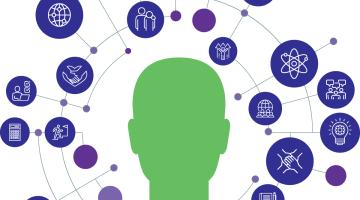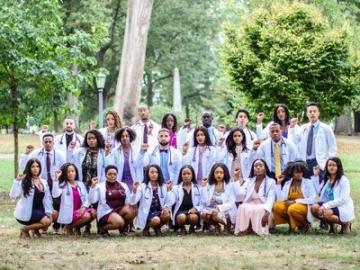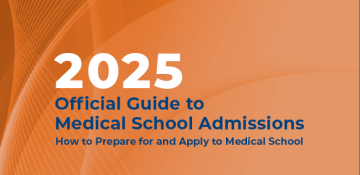
Cultural competence is one of the AAMC’s preprofessional 15 core competencies for entering medical students. In addition to metrics like your GPA and MCAT® score, some medical school admissions committees put a lot of emphasis on a student’s preparedness for medical school by assessing these areas.
There are many ways to demonstrate your proficiency in competency areas, and one activity will likely validate multiple competency areas. For example, a student may demonstrate their cultural competence by being multilingual or having leadership experience with a heritage group on campus. And cultural competence doesn’t only refer to cultures in a traditional sense — having childhood experience with poverty or working with medically underserved communities are other valid ways to develop your cultural competence.
The Anatomy of an Applicant website defines the cultural competence as follows:
Cultural competence: Demonstrates knowledge of sociocultural factors that affect interactions and behaviors; shows an appreciation and respect for multiple dimensions of diversity; recognizes and acts on the obligation to inform one’s own judgment; engages diverse and competing perspectives as a resource for learning, citizenship, and work; recognizes and appropriately addresses bias in themselves and others; interacts effectively with people from diverse backgrounds.
Here are a few examples from real medical students who successfully demonstrated their cultural competence on their medical school applications:
- Mike grew up in rural Hawaiian communities, where he worked as a mobile intensive care technician, an EMT, and a firefighter. He also had a considerable amount of mentoring experience and community service work with these populations. One reason he was a good fit for the University of Hawaii at Manoa John A. Burns School of Medicine was because cultural responsiveness made him particularly appropriate for work with their alliances in Hawaii and the Asia-Pacific region.
- Erin had always been aware of the public health obstacles faced by Native American populations because of her father’s family and background. As co-president of Native Circle — a group dedicated to the advancement of Native American populations — she raised awareness of issues on campus and raised funds to support public health projects that improve the health, education, and well-being of Native Americans. She also performed public health research amongst indigenous and medically underserved populations as a faculty member at the Johns Hopkins Center for American Indian Health.
- Jon served in the Air Force, and upon returning from his deployment, he was placed in charge of his base’s Language and Cultural Learning Center. Jon organized groups of linguists to teach at elementary schools and volunteer as translators at a monthly free border clinic. Using this immersion method, the Language and Cultural Learning Center program soon became the highest performing in the Air Force.
To learn more about how real students have demonstrated competencies on their applications, check out Anatomy of an Applicant, where you can review competency definitions and learn about specific ways that each student demonstrated a range of competencies on their application. You can also complete a workbook to figure out what experiences represent competencies that you are currently demonstrating, why they’re important, and what you’re learning, and use that to make a plan for which ones you want to develop and how.


